Flying high: The art of training birds to roam free takes off
Awareness that pet birds can be trained to fly free but return to their owner has grown in recent years, allowing some experts to turn it into a full-time job.
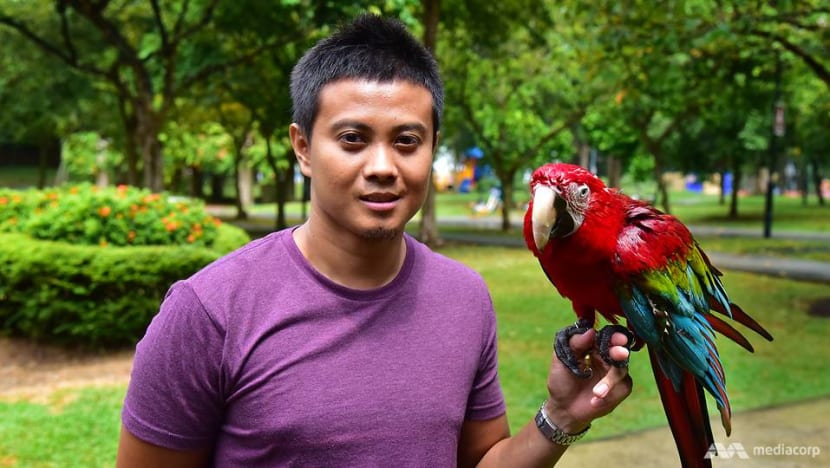
Full-time bird trainer Nurhisham Abdul Wahab with one of his three birds, a green-winged macaw. (Photo: Gaya Chandramohan)
SINGAPORE: When a brightly coloured pet macaw soars into the sky after being released by its owner, its natural instinct might be to fly far and wide as it explores its freedom. But if it has been trained by Mr Nurhisham Abdul Wahab, it is likely to have a good stretch of its wings before happily fluttering back to its owner.
Mr Nurhisham, 36, has made a career of his passion in training birds after quitting his job as a sales consultant in the tourism industry six years ago. He has trained at least 100 pet birds to date.
The question he gets asked most is: “Why do birds need to be trained to fly?"
“Yes, they can fly, but they fly away,” he tells them. Birds have traditionally been trained to talk and perform tricks, but what he teaches is for birds to fly away and return to their owner, which is called free flight.
While it may sound simple, it involves discipline, patience and determination on the owners' part. Training a bird for free flight can take just two weeks, if the bird is young and has not picked up bad habits, like landing on trees or following other distractions, said Mr Nurhisham. However, with older birds, it can take two years.
Mr Nurhisham teaches owners how to get their birds to recognise their voice and commands. He also guides the birds to learn how to circle back to their owners, he said, speaking to Channel NewsAsia at a popular free flight spot at West Coast Park. He charges S$350 for four sessions, by which time the birds should be ready, and is also available for consultation over WhatsApp.
"All birds are different. They have their own moods, characters. I assess them first,” he said.
However, sometimes the owners are harder to work with. "It's definitely easier to talk to animals," he said with a laugh. He said some owners are too impatient, and push their birds too hard, he said.
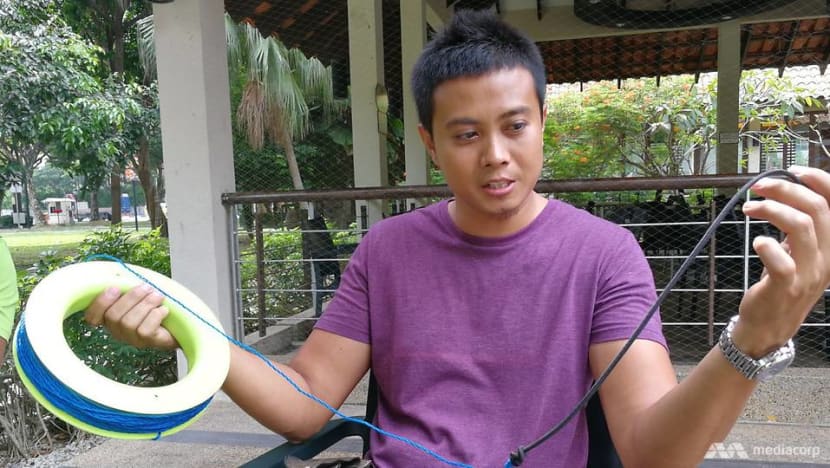
RISKS OF BIRDS GETTING CHASED, GETTING LOST
When it is ready, the bird flies free, usually with a GPS tracker on it. Knowing when is the right time for this is the most difficult portion of his job, as too early, and the risk of the bird flying away for good increases.
No matter how well the bird is trained, there is a risk it can go missing, he said. With well-trained birds, the risk is minimal. Birds getting lost is common, going by the number of calls for help on Facebook bird group pages. When the bird is fitted with a GPS tracker, the owner can narrow down the location and try to reach it, but with the bird flying around, it is a challenge.
Another bird trainer, Mr Daniel Kor, 30, said that when a bird gets lost, the mistake that an owner may make is chasing them.
"They get panicked and run after the bird. But the chances of the bird returning are higher when they stay at the same spot and repeatedly call out for it. Sometimes, the bird is not lost, it's just exploring," said animal rescue officer who has been training birds part-time for 10 years.
"When it returns, and it can't see you, it may get traumatised and fly away," he added.
Both Mr Kor and Mr Nurhisham said birds can get chased by predators like eagles and crows, and they may also get distracted.
Pointing to the areas surrounding West Coast Park, a bird owner who wanted to go by his online monicker Bill Brown said: “Look, there are about 200 warm bodies around us. Look at the highway, there are so many cars. Everything is a distraction from the owner.”
Mr Brown wanted to remain anonymous as he is afraid his birds could be stolen. His two hyacinth macaws, Bluey and Mizu, have their own Facebook page and and an international following of about 39,000 netizens.
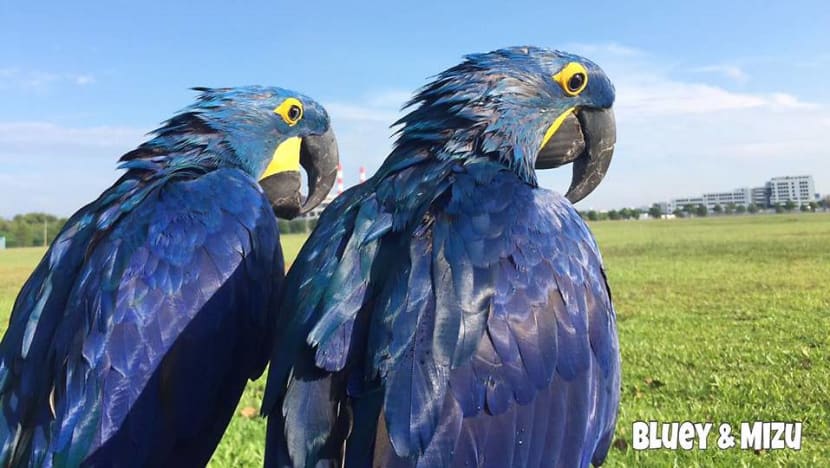
GROWTH IN AWARENESS OF FREE FLIGHT
For years, bird keepers have been confining their birds to a cage, and clipping their wings so they are not able to fly high. But the awareness that they can be trained to fly outdoors and return to owners has grown in recent years. In fact, Mr Kor and Mr Nurhisham said that interest has doubled over the past two to three years.
Mr Nurhisham used to have 10 appointments per week, but currently, he has at least 20. This is why he is able to do the job full-time, he said.
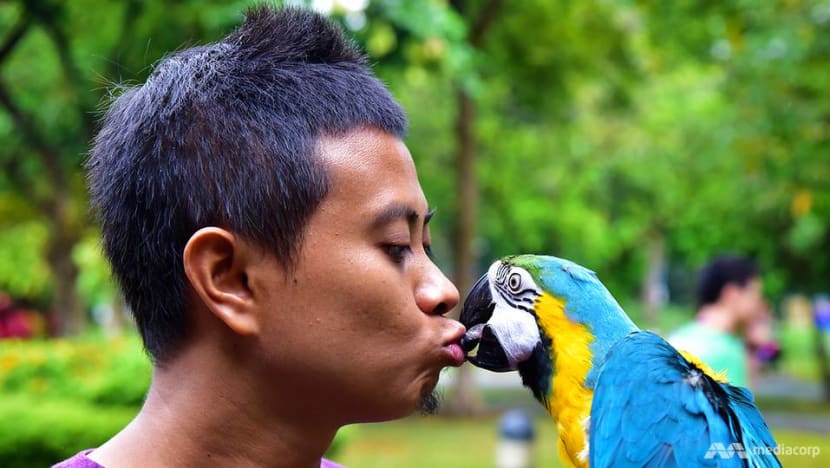
Mr Nurhisham said that he is getting more inquiries because people see videos of others who are able to set their birds free, and want their own pets to have that ability. They also attend gatherings set up by bird groups and witness free flights first-hand. Mr Kor said that it is a matter of health as well. When birds do not exercise, they put on weight and may develop liver diseases, he said.
"My parrot died at three years old of liver disease when I was 14 or 15. That's when I started learning about keeping birds healthily. It's a must for them to exercise," Mr Kor said.
Mr Brown, who has kept several other species of parrots, only started training his birds with Mr Nurhisham three years ago. Besides the hyacinth macaws, he also has a black palm cockatoo.
"When they don't fly, they aren't at their psychological and physical best. And if left unchecked, they become even more unmanageable when they get to their breeding age." he said. His commitment to train his hyacinths for flight influenced his decision to settle for more flexible work. Previously in the banking industry working long hours, he now runs his own advisory business.
TRAINING BIRDS PROFESSIONALLY A "MUST"
Mr Kor said that many bird owners learn through books or the Internet and think they are ready to set their birds free, but often the birds go missing.
"In the end, it's all just theory. There is no experience. Birds are living things, so it's not one size fits all," he said.
When Ms Rachel Liaw's previous parrot died in an eagle chase two years ago, it hit her hard. She grieved for a year, and spent that time immersing herself in educating herself on how to keep and train birds.
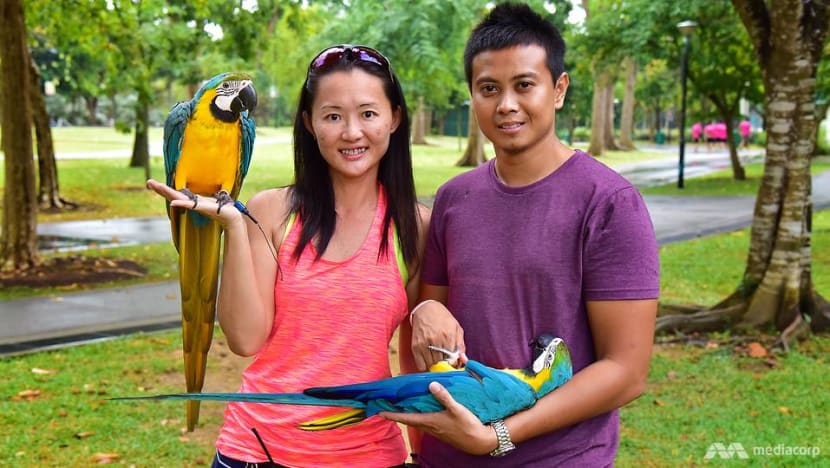
"I studied as if I was going through university. I had so much desire to learn because of my loss," said the 40-year-old who works in the army. She then engaged Mr Nurhisham's services to train her next bird. a blue and gold macaw named Teddy.
"We trained Teddy to turn left, turn right, ascend, descend. It's a whole new world. It's very interesting, and the level of knowledge and skill make it very challenging," she said. She said that Mr Nurhisham provides personalised training.
It took months of conditioning, repetition and programming, she added. She is now so passionate about training that she has gone to Thailand with a group of free flight enthusiasts to see how they do it there. She added that spending time in the outdoors with other bird owners is a healthy way to spend her time.
But above all, it is the feeling that she gets when her bird returns to her that makes the commitment and dedication worth it.
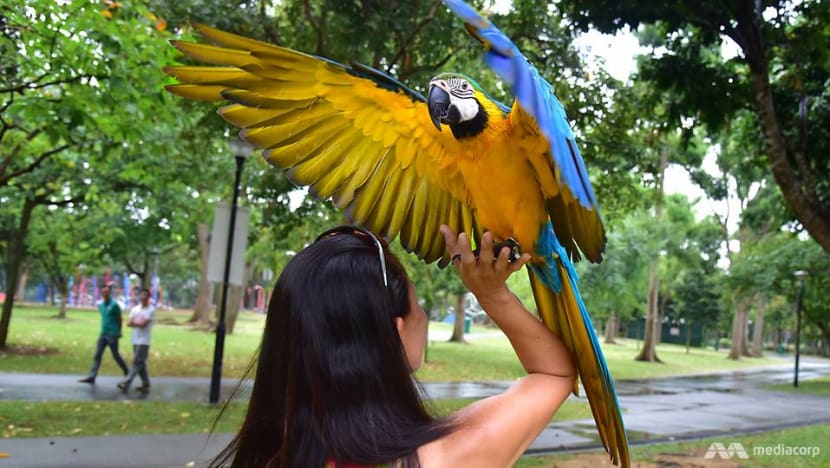
"I've kept dogs and cats. But when Teddy flies and returns to me, the joy, the satisfaction, is 200 times more," she said.












